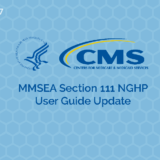Planning to protect Medicare’s future interests should be part of any diligent Medicare Secondary Payer Act[1] (MSP) compliance analysis. However, because enforcement actions by the U.S. under the MSP have focused on reimbursement of Medicare for payments occurring prior to settlement, Medicare lien resolution (i.e. investigating and negotiating satisfactory payment of Medicare conditional payment reimbursement demands), should be placed at the top of the MSP compliance list by primary payers and those representing injured parties. We recently wrote about conditional payment correspondence from the Centers for Medicare & Medicaid Services (CMS) through its BCRC and CRC contractors, the updated functionality of the Medicare Secondary Payer Recovery Portal (MSPRP), and the importance of obtaining correct conditional payment amounts so settlements can move forward while protecting Medicare’s past interests. When the U.S. government’s conditional payment reimbursement amount (Medicare lien amount) is larger than a potential settlement amount or the payment of the full lien amount will take up a good portion of a Medicare beneficiary’s net settlement, a beneficiary will be less interested in settling. Enter Medicare lien resolution.
Medicare Lien Resolution Road Map
When we perform Medicare lien resolution, our goal is to get CMS to evaluate the Medicare lien amount compared to the net amount to be received by injured party after fees and costs are deducted. Additionally, we sometimes ask CMS to evaluate the Medicare lien amount compared to the weakened financial position/physical condition of the Medicare beneficiary after an accident. When the net settlement is unfairly low compared to the Medicare lien amount, CMS will often reduce the lien prior to settlement. There are several federal statutes and accompanying regulations that provide authority for CMS to reduce (compromise) or sometimes waive Medicare liens. The statutes and regulations outline standards and factors that may be considered for full or partial reductions of Medicare lien amounts. These factors often focus on the ability of the injured party to pay the lien, costs the government would incur to pursue collecting the lien, as well as the injured party’s financial/physical circumstances.
Medicare Lien Waiver Process
The Medicare lien waiver process is a more involved process than the compromise process. Waiver requests typically focus on the financial position of the injured Medicare beneficiary, who may have higher expenses and/or lower income after sustaining an injury. After settlement occurs and funds are transferred, while the MSP technically still allows the U.S. to pursue the primary payer (entity responsible for payment) when a Medicare beneficiary fails to satisfy a Medicare lien, the Medicare beneficiary is most often considered the debtor and pursued by CMS initially through the Benefits Coordination and Recovery Center (BCRC). Attorneys for Medicare beneficiaries can also be caught in the MSP cross hairs. Waiver requests for a Medicare beneficiary are sent to the BCRC. In turn, the BCRC typically asks for a SSA-632 form to be filled out with a variety of financial information about the beneficiary. Waiver determinations may be made by BCRC staff and are usually based on financial hardship.
To speed up the process and increase the likelihood of a positive outcome, it is a best practice when requesting a waiver to provide a full financial picture of the beneficiary, including either a completed SSA-632 form or as much of the information requested by that form as can be obtained, so BCRC staff will have adequate information to reach a fair determination. A waiver may be granted when continuing the collection would be against “equity and good conscience.” The process takes about 120 days from start to finish for a waiver determination to be made. If a conditional payment demand has been paid, a waiver or compromise request may still be made, and a refund will be considered. If the BCRC makes a determination to refund all or part of the prior payment, the refund will typically take an additional 3-4 weeks, depending on whether payment had been made to the BCRC directly or whether it was made to the Department of Treasury after a referral of the debt to Treasury by the BCRC.
Medicare Lien Compromise Process
If there is not a significant financial or physical hardship to the Medicare beneficiary, but the dollar amount of the projected settlement is low compared with the likely settlement value and/or the Medicare lien amount, an alternative to a waiver request is a Medicare lien compromise request. To request a compromise, a third-party representative may offer to pay a specific dollar amount on behalf of the beneficiary to fully compromise the outstanding Medicare debt/lien amount. The requester must include the settlement amount (or settlement offer), the amount they are asking CMS to accept as full payment, and the actual or projected attorney fees and costs associated with procuring the settlement. Attorney fees and costs are omitted when the beneficiary is not represented by counsel. CMS, through the BCRC, either responds by accepting the offer or presenting an alternate proposed amount. At that point, the beneficiary must pay the countered amount or if accepted, pay the accepted amount within 60 days of the BCRC response, or else the offer is no longer valid.
Letting a representative act on your client’s behalf in communicating and negotiating with CMS has helped lawyers save time and put more money in the pockets of their clients, while helping parties to the settlement comply with the MSP with respect to Medicare’s past interests. Count on Medivest to help you with your Medicare lien resolution needs.
[1] 42 U.S.C. § 1395y(b)(2) et seq.







